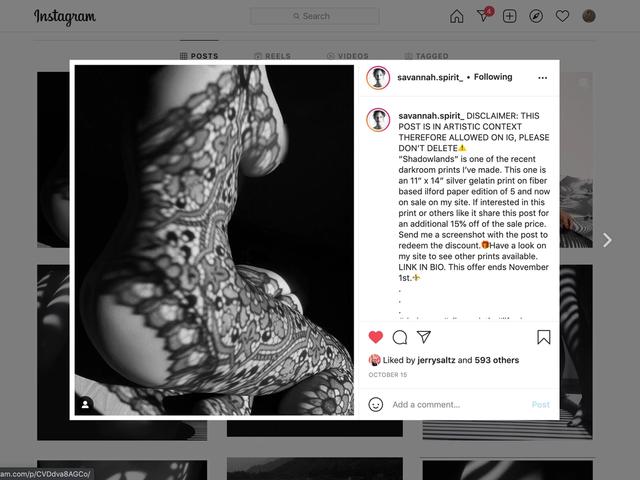In an unlikely move, an OnlyFans account won a Cannes Golden Lion PR award this year. “Vienna Strips on OnlyFans” was created by the Vienna Tourist board as a brilliant and subversive campaign to highlight the censorship of art on social media and promote “Vienna’s historic sexual liberty”. Following repeated deletion of historic art on Instagram, rather than struggle against the platform’s censorship of nude works and other “sensitive” content, the board embraced wit and steered art lovers and tourists directly to a platform made famous by sex workers. The account, which offered free museum passes, racked up more than 150 million visits.
The choice of OnlyFans was an apt one, since it is, as a company spokesperson says, “the safest and most inclusive digital media platform welcoming creators from all genres and all over the world. When it comes to art, creatives are able to have true freedom of expression [here].” However, despite the campaign’s popularity and increasing threats to artistic expression across the internet, the art world has yet to follow Vienna’s lead. So what is stopping artists from turning to “the safest and most inclusive” platform?
The short answer is stigma. The UK-based over-18s platform OnlyFans hit its stride during pandemic lockdowns when performers and sex workers made it the powerhouse it is today. Despite hosting accounts for cooking, fitness, gardening, travel and more, OnlyFans has not shaken its reputation for sexual content—and nor should it, according to popular erotic painter Armando Cabba. “It’s incredibly important that artists know who made the platform what it is today,” says Cabba. “Even outside the digital space, artists have more in common with sex workers”, with both often being under-valued and exploited.
Recent attempts to ban illicit imagery online have resulted in wholesale censorship, “shadowbanning” (where Instagram secretly hides posts from users), and deplatforming of artists and sex workers across social media platforms. Finding themselves increasingly unwelcome, artists seeking alternatives can be left only with the option of joining spaces designed for sexual content or erotic art.
Canary in the coal mine
Annie Brown is the founder of the social media platform Lips, and the inclusive online moderation system Reliabl. Lips, with 20,000 active monthly users, was designed for artists of erotica, but Brown anticipates that as challenges grow for artists online, more will be turning to such platforms. “I encourage artists to support and align themselves with sex workers,” says Brown. “Sex workers are the canary in the coal mine,” she adds, saying that artists will soon be pushed there, too.
In talking with artists about OnlyFans, the stigma is clear. They repeatedly express concern about not belonging on the platform, or a desire to differentiate their art from sexual content. But, as Cabba points out, if these are your concerns, then “you need to reflect and unlearn a lot when it comes to sex workers”. The history of art is full of sex work and sexual content, not to mention nudity, which is generally sexualised by society. It was no accident that the Vienna Tourist Board pointed to its history of “sexual liberty” when creating its OnlyFans account, while at the same time promoting art appreciation.
Some artists who have taken the leap to the platform express relief. Savannah Spirit, who opened her account after much consideration, says: “I actually feel I’m in a safer environment. I don’t get hassled by strangers or by the algorithm threatening me every second. I feel free to post my artwork without any fear.” A spokesperson for OnlyFans recognises that need, stating that it “offers artists a safe space to lawfully express themselves online and [it] means their fans can see their work without unwarranted censorship”.
As OnlyFans encourages artists of all kinds to join the platform, we may eventually see more than just creators using the site. Unit London gallery’s director Jonny Burt has sourced many artists from Instagram, where he has witnessed art censorship. Burt expressed his support for sites such as OnlyFans. “I would certainly embrace any platform that puts the discussion and power of artistic freedom back where it belongs: in the hands of people, not algorithms,” he says.
While no major museums or artists have followed the Vienna Tourist Board’s lead, it serves as a sign of the times and a lesson about the ties that bind artists and sexual liberty. As freedom of expression is increasingly threatened online, what many artists see as a last resort may actually be the natural—and art historically condoned—way forward.



